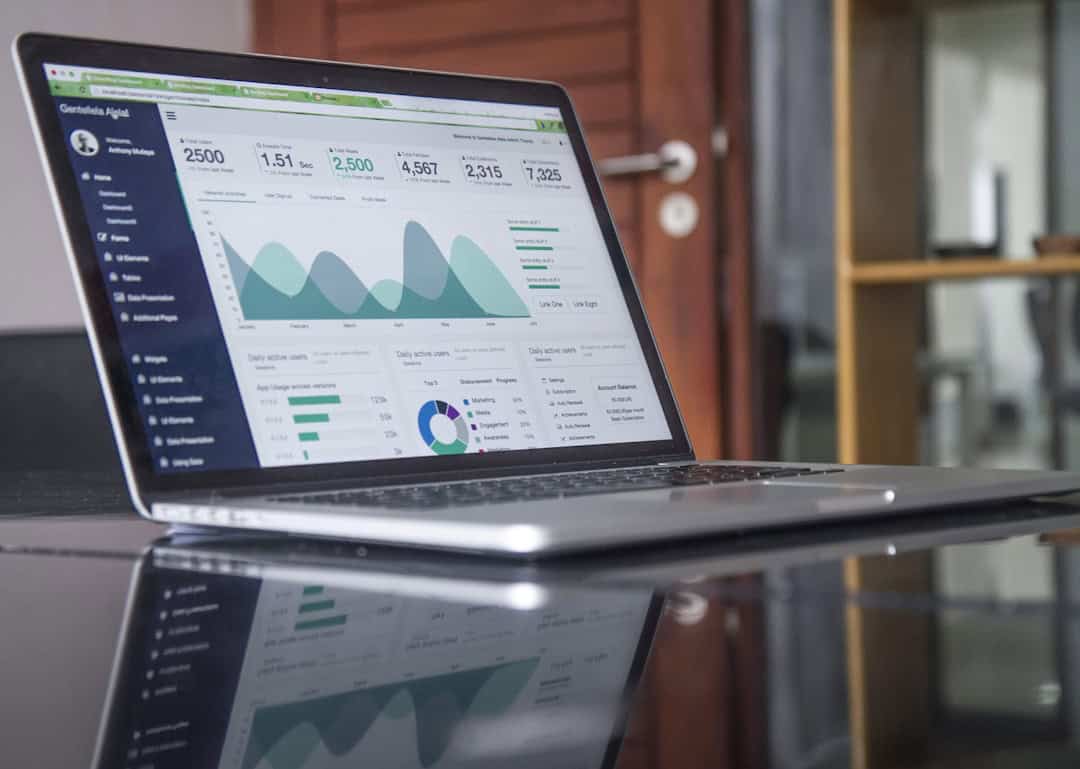Artificial Intelligence (AI), Machine Learning (ML), and Deep Learning (DL) are interconnected fields within computer science that focus on creating intelligent systems capable of performing tasks traditionally requiring human intelligence. AI encompasses the broader goal of developing machines that can learn, reason, solve problems, perceive, and understand language. ML, a subset of AI, concentrates on algorithms that enable computers to learn from and make predictions or decisions based on data.
DL, a further specialized subset of ML, utilizes multi-layered neural networks to analyze complex factors in a manner analogous to the human brain. These technologies have experienced rapid advancements in recent years, finding applications across diverse industries to enhance efficiency, accuracy, and decision-making processes. In healthcare, AI assists in disease diagnosis, treatment personalization, and improving patient outcomes.
The finance sector employs ML for fraud detection, risk assessment, and algorithmic trading. Manufacturing benefits from DL in predictive maintenance, quality control, and supply chain optimization. Retail utilizes AI for personalized marketing, inventory management, and customer service.
The transportation industry leverages ML for route optimization, demand forecasting, and autonomous vehicle development. In agriculture, DL contributes to crop monitoring, yield prediction, and resource optimization. As technology continues to progress, the potential applications of AI, ML, and DL expand, revolutionizing industries by automating processes, analyzing large-scale data, and providing unprecedented insights.
These advancements are transforming various sectors, improving operational efficiency, and opening new avenues for innovation and problem-solving across multiple domains.
Key Takeaways
- AI, ML, and DL are interconnected fields that focus on creating intelligent systems and algorithms.
- AI in healthcare has the potential to revolutionize patient care, diagnosis, and treatment.
- ML in finance can be used for fraud detection, risk assessment, and algorithmic trading.
- DL in manufacturing can optimize production processes, quality control, and predictive maintenance.
- AI in retail can enhance customer experience, inventory management, and personalized marketing.
- ML in transportation can improve route optimization, demand forecasting, and autonomous vehicles.
- DL in agriculture can help in crop monitoring, yield prediction, and precision farming.
AI in Healthcare
AI has the potential to revolutionize healthcare by improving patient outcomes, reducing costs, and increasing efficiency. One of the most significant applications of AI in healthcare is in medical imaging. AI algorithms can analyze medical images such as X-rays, MRIs, and CT scans to detect abnormalities and assist radiologists in making more accurate diagnoses.
AI can also be used to personalize treatment plans by analyzing large amounts of patient data to identify the most effective treatments for individual patients. Additionally, AI-powered chatbots and virtual assistants can provide patients with personalized medical advice and support, reducing the burden on healthcare providers. Another important application of AI in healthcare is in drug discovery and development.
AI algorithms can analyze large datasets to identify potential drug candidates and predict their effectiveness, significantly speeding up the drug development process. AI can also be used to analyze electronic health records to identify patterns and trends that can improve population health management and disease prevention. Overall, AI has the potential to transform healthcare by improving diagnosis accuracy, personalizing treatment plans, and accelerating medical research and development.
ML in Finance

Machine Learning is revolutionizing the finance industry by enabling more accurate predictions, reducing risks, and automating processes. One of the key applications of ML in finance is in fraud detection. ML algorithms can analyze large volumes of transaction data to identify patterns indicative of fraudulent activity, helping financial institutions prevent financial losses and protect their customers.
ML is also being used for credit scoring to assess the creditworthiness of individuals and businesses more accurately than traditional methods. Another important application of ML in finance is in algorithmic trading. ML algorithms can analyze market data to identify profitable trading opportunities and execute trades at high speeds, taking advantage of small price discrepancies.
ML is also being used for risk assessment to predict market fluctuations and assess the potential impact on investment portfolios. Overall, ML has the potential to transform the finance industry by improving risk management, increasing investment returns, and enhancing customer experience.
DL in Manufacturing
| Year | DL in Manufacturing (in billions) | Percentage of Total Manufacturing |
|---|---|---|
| 2015 | 1.2 | 5% |
| 2016 | 1.5 | 6% |
| 2017 | 1.8 | 7% |
| 2018 | 2.0 | 8% |
Deep Learning is transforming the manufacturing industry by improving quality control, predictive maintenance, and supply chain optimization. One of the key applications of DL in manufacturing is in predictive maintenance. DL algorithms can analyze sensor data from manufacturing equipment to predict when maintenance is needed, reducing downtime and preventing costly equipment failures.
DL is also being used for quality control by analyzing images of products to identify defects and ensure consistent product quality. Another important application of DL in manufacturing is in supply chain optimization. DL algorithms can analyze large volumes of data from suppliers, production facilities, and distribution centers to optimize inventory levels, production schedules, and delivery routes.
DL is also being used for demand forecasting to predict customer demand more accurately and optimize production accordingly. Overall, DL has the potential to transform the manufacturing industry by improving operational efficiency, reducing costs, and enhancing product quality.
AI in Retail
Artificial Intelligence is revolutionizing the retail industry by enabling personalized marketing, improving inventory management, and enhancing customer service. One of the key applications of AI in retail is in personalized marketing. AI algorithms can analyze customer data to identify individual preferences and purchasing behaviors, enabling retailers to deliver targeted marketing messages and product recommendations that are more likely to resonate with customers.
AI is also being used for dynamic pricing to adjust prices based on demand, competition, and other factors in real-time. Another important application of AI in retail is in inventory management. AI algorithms can analyze sales data and other factors to predict demand more accurately and optimize inventory levels across different locations.
AI is also being used for customer service through chatbots and virtual assistants that can provide personalized support and recommendations to customers. Overall, AI has the potential to transform the retail industry by improving customer engagement, increasing sales, and optimizing operations.
ML in Transportation

Machine Learning is transforming the transportation industry by enabling route optimization, demand forecasting, and autonomous vehicles. One of the key applications of ML in transportation is in route optimization. ML algorithms can analyze traffic data, weather conditions, and other factors to identify the most efficient routes for delivery vehicles or public transportation services.
ML is also being used for demand forecasting to predict passenger or freight demand more accurately and optimize transportation services accordingly. Another important application of ML in transportation is in autonomous vehicles. ML algorithms are used to train self-driving cars to perceive their environment, make decisions, and navigate safely without human intervention.
ML is also being used for predictive maintenance of transportation vehicles by analyzing sensor data to identify potential issues before they occur. Overall, ML has the potential to transform the transportation industry by improving efficiency, reducing emissions, and enhancing safety.
DL in Agriculture
Deep Learning is revolutionizing the agriculture industry by enabling crop monitoring, yield prediction, and resource optimization. One of the key applications of DL in agriculture is in crop monitoring. DL algorithms can analyze satellite imagery and other data sources to monitor crop health, identify pest infestations or diseases, and optimize irrigation and fertilization practices.
DL is also being used for yield prediction by analyzing historical data and environmental factors to forecast crop yields more accurately. Another important application of DL in agriculture is in resource optimization. DL algorithms can analyze soil data to optimize planting patterns and fertilizer application, reducing waste and environmental impact.
DL is also being used for robotic farming by training machines to perform tasks such as planting seeds or harvesting crops autonomously. Overall, DL has the potential to transform the agriculture industry by improving productivity, sustainability, and food security. In conclusion, AI, ML, and DL are revolutionizing industries across the board by enabling more accurate predictions, automating processes, and providing insights that were previously impossible to obtain.
These technologies have the potential to transform healthcare by improving patient outcomes and accelerating medical research; finance by reducing risks and enhancing customer experience; manufacturing by improving quality control and supply chain optimization; retail by enabling personalized marketing and optimizing operations; transportation by improving route optimization and safety; and agriculture by increasing productivity and sustainability. As technology continues to advance, the potential applications of AI, ML, and DL will only continue to grow across various industries.
If you’re interested in learning more about the future trends and innovations in the metaverse and how they are shaping user experiences, check out this article. It discusses the potential impact of AI, ML, and DL on the evolution of online communities within the metaverse.
FAQs
What is AI, ML, and DL?
AI stands for Artificial Intelligence, which refers to the simulation of human intelligence in machines. ML stands for Machine Learning, which is a subset of AI that allows machines to learn from data and improve their performance. DL stands for Deep Learning, which is a subset of ML that uses neural networks with multiple layers to learn from data.
How are AI, ML, and DL used in real-world applications?
AI, ML, and DL are used in a wide range of real-world applications, including natural language processing, image and speech recognition, recommendation systems, autonomous vehicles, healthcare diagnostics, and financial fraud detection.
What are the benefits of AI, ML, and DL?
The benefits of AI, ML, and DL include improved efficiency and productivity, better decision-making, automation of repetitive tasks, enhanced customer experiences, and the ability to process and analyze large amounts of data.
What are some common challenges and limitations of AI, ML, and DL?
Some common challenges and limitations of AI, ML, and DL include the need for large amounts of high-quality data, the potential for biased or inaccurate results, the requirement for specialized expertise, and concerns about privacy and security.
What are some popular tools and frameworks for AI, ML, and DL?
Some popular tools and frameworks for AI, ML, and DL include TensorFlow, PyTorch, scikit-learn, Keras, and Microsoft Cognitive Toolkit. These tools provide libraries and APIs for building and training machine learning models.











Leave a Reply